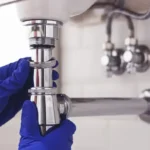The tropical climate and dense vegetation in Phuket creates an environment where pests like insects, rodents, and arachnids can thrive easily both indoors and outdoors. Dealing with pests is not just about preventing nuisance creatures in your home – it is essential for protecting health and property too.
Pests carry disease, bite and sting, damage structures, and contaminate food. Rats and mice are vectors for dangerous diseases like salmonella, leptospirosis. Mosquitoes transmit malaria, dengue fever, and other illnesses. Termites destroy wooden furniture and the structural integrity of homes.
With Phuket being such a popular tourist destination, businesses must maintain strict Phuket pest control to uphold sanitation standards. Managing pests well is crucial for public health across the island. Proper identification and control methods can reduce health risks and prevent infestations from getting out of hand.
Common Household Pests in Phuket
Phuket homes, hotels, restaurants and other businesses must contend with a number of resilient pests suited to the local tropical climate. These include:
Cockroaches
Cockroaches thrive in humid, warm environments found all over Phuket. Several species are common across Thailand – the American cockroach, German cockroach, Asian cockroach and Australian cockroach. These nocturnal omnivores feed on human food waste and can transmit bacteria like Salmonella and E. coli by contaminating surfaces and food.
Mosquitoes
Mosquitoes breed quickly in standing water like puddles, flower pot bases, coconut shells etc. They require blood meals to lay eggs and transmit diseases like malaria, chikungunya, dengue fever and zika through their bites. The abundant rainfall and vegetation provides the perfect humid climate for various mosquito species to proliferate.
Ants
Tropical fire ants and pharaoh ants commonly invade buildings searching for food and water. They contaminate surfaces, sting painfully, and some species even damage structures. Certain species also protect and farm honeydew-producing insects, furthering pest issues indoors. Their habit of trailing along defined paths as they travel facilitates intrusion inside homes and businesses.
Termites
Termites are silently destructive pests that cause major damage to wooden furniture, support beams, frames and infrastructure. Subterranean termites invade from underground nests through mud shelter tubes. Dampwood termites inhabit moist, rotting logs and can infest damp structural lumber. Their cellulose rich diets and habit of remaining unseen while chewing through wood makes them hugely destructive pests.
Bed Bugs
While not known to transmit disease, bed bug bites can cause severe allergic reactions and secondary infections in some people. Their nature of hiding in mattresses and crevices near sleeping areas facilitates biting at night. Small, flat and quick-moving, they can spread rapidly from infected luggage/furniture into hotel rooms and homes through cracks.
Rats and Mice
The tropical climate, dense vegetation and plentiful food waste attracts rats and mice to homes and restaurants. They contaminate surfaces and food with urine and feces, spreading bacteria and viruses. They have powerful teeth for gnawing through wood, plastic and even soft metals while building nesting areas and foraging. Rodent feces, hair and urine also trigger allergies in some people.
Health Risks Associated with Pests
Pests do not just cause irritations – they can seriously impact human health, especially in tropical locations like Phuket which enable diverse species to thrive. It is important to control pests to prevent:
Disease Transmission
Rats, mice, mosquitoes and cockroaches can directly or indirectly spread dangerous bacterial, viral and parasitic diseases to humans. Rodents carries pathogens like Hantavirus, Leptospira interrogans etc. Mosquitoes transmit West Nile virus, dengue, malaria. Cockroaches transfer E. coli and Salmonella.
Allergies and Asthma
Pests produce allergens that can trigger allergic reactions or asthmatic attacks in residents. Cockroach frass, rodent urine and feces, saliva and body parts contains potent allergens. Continuous exposure can lead to long-term allergic sensitization and worsened asthmatic responses. Children are especially vulnerable to developing sensitivity.
Bites and Stings
Rodent and insect bites or stings can break skin and cause secondary bacterial infections. Some people may have severe hypersensitivity reactions to stinging insects or spiders, requiring emergency care. Scratching bites vigorously also increases infection risk. Bed bugs, though not transmitting diseases, causes severely itchy and painful red welts through their stealthy nighttime bites.
Structural Damage to Property
Termites, carpenter ants and certain beetles damage wooden structural elements over time as they burrow, chew through and nest in them. They can severely compromise building integrity and resident safety if left unchecked. Rodents also gnaw through wood, plastic and electrical wiring while burrowing, causing fires or power issues.
Signs of a Pest Infestation
Detecting early signs of pests enables early intervention, before populations grow beyond control. Look out for:
Droppings
Cockroaches leave dark specks in attics and cupboards. Mice produce pill-shaped black droppings. Rats leave behind bean-sized feces. These indicate established pest activity, especially if found consistently despite cleaning. Collect samples to show the pest control technician.
Chew Marks
Mice and rats leave gnaw marks on food packages, furniture, drywall and wood trim as they chew to wear down teeth. Look for uneven edges, shredded fabric, notched edges and surface grooves for evidence. Also inspect important documents as they shred paper for nest building.
Strange Odors
The musky urine smell of mice and rats can linger where they nest or travel. Cockroaches produce odors from their frass and chemical secretions. Sweet, musty scents may indicate termite activity. Try locating odor hotspots to track where pests traverse and congregate.
Visible Pests or Skin Irritation
Seeing the actual insects, webs, mounds or rodents indicates progressive infestation indoors. Bites and stings that cause severe skin irritation likely means medically important pests like spiders or scorpions. Note their appearance when seen and save specimens in alcohol for pest control agents to identify.
Preventing Pests in Phuket Homes and Businesses
While tropical Phuket offers a universally welcoming climate, implementing targeted prevention measures disrupts the key elements pests need to thrive. This includes:
Sanitation and Cleanliness
Pests look for places with accessible food, water and shelter. Eliminating food waste often and deep cleaning areas prevents additional sustenance for populations. Fixing leaky pipes, drain blockages, drying out damp spots in basements area also helps by eliminating water sources and breeding spots for moisture-loving species.
Sealing Up Entry Points
Installing mesh screens on ventilators, weather-proofing doors and windows, sealing cracks prevents easy home invasion routes for determined pests. Ensure wall edges, pipe openings and wiring holes around appliances have no gaps for cockroaches and rodents to sneak through. Apply caulk and expandable spray foam as affordable sealing solutions.
Removing Standing Water
Mosquitoes utilize small puddles, old tires, flower vases and unattended pet dishes as prime breeding pools to reproduce rapidly. Drain or scrub and refresh stagnant water around homes weekly to remove larvae before they hatch. Water holding plants like bromeliads can also be treated with bacterial formulations against larvae.
Keeping Food in Sealed Containers
Pantry staples like rice, noodles, cereals, flour, lentils, spices and more offer bountiful carbohydrates for Indian meal moths, flour beetles and weevils. Refrigerating vulnerable items, placing crackers/chips in air tight containers, inspecting dry goods regularly, avoids easy meals allowing pest supply build up.
Choosing a Pest Control Service in Phuket
With tropical heat and rainfall year-round, pests thrive easily in Phuket. Professional pest control services use strategic solutions to eradicate infestations, prevent major structural damage and safeguard health against disease vectors and stinging insects over the long term.
Types of Pest Control Methods
Established agencies offer both chemical and non-chemical methods to cater to specific client needs:
Chemical Pesticides
Different anticoagulant rodenticides, organophosphates, carbamates and synthetic pyrethroids can effectively control most urban pests but need careful application by experienced technicians minimizing environmental and health side effects. Biocides are also regulated by Thai authorities.
Non-Chemical Treatments
Heat, freezing, power vacuuming physically removes pests. Desiccant dusts like diatomaceous earth causes insects to dry out. Bacillus thuringiensis variants target mosquito and other insect larvae. Traps use pheromones, optimal shelter and food lures suiting specific species behavior for capturing them.
Integrated Pest Management (IPM)
IPM combines sanitation, pest proofing, environmental manipulation and least toxic solutions in a tiered response targeting entry, sustenance, shelter and reproduction requirements to reduce populations. It aims to avoid hazardous control reliance over the long term across entire neighborhoods.
Questions to Ask a Pest Control Professional
Solicit estimates from well reviewed services local to your area in Phuket. Ensure they have technical expertise and solutions catering to the tropical climate. Inquire regarding:
License and Insurance
Reputed companies thoroughly vouch staff, hold necessary permits for regulated biocides, maintain full liability insurance covering health damages and accidental pesticide exposure during service. This protects clients from liability and ensures proper training in high risk solutions.
Treatment Plans and Solutions
Trusted companies provide customized plans targeting identified species through initial inspection prior to service quoting. Ask about all options with pros/cons: chemical concentrations used, traps or barriers suggested, follow up schedule, what prep work is required from residents etc.
Environmental Responsibility
Established agencies train staff on precision targeting with pesticide use rather than broad spraying across sites. Usage tracking and strict dosage guidelines minimize health and ecological side effects. Ask about under what situations chemical usage is minimized for vulnerable residents like children or pregnant women.







